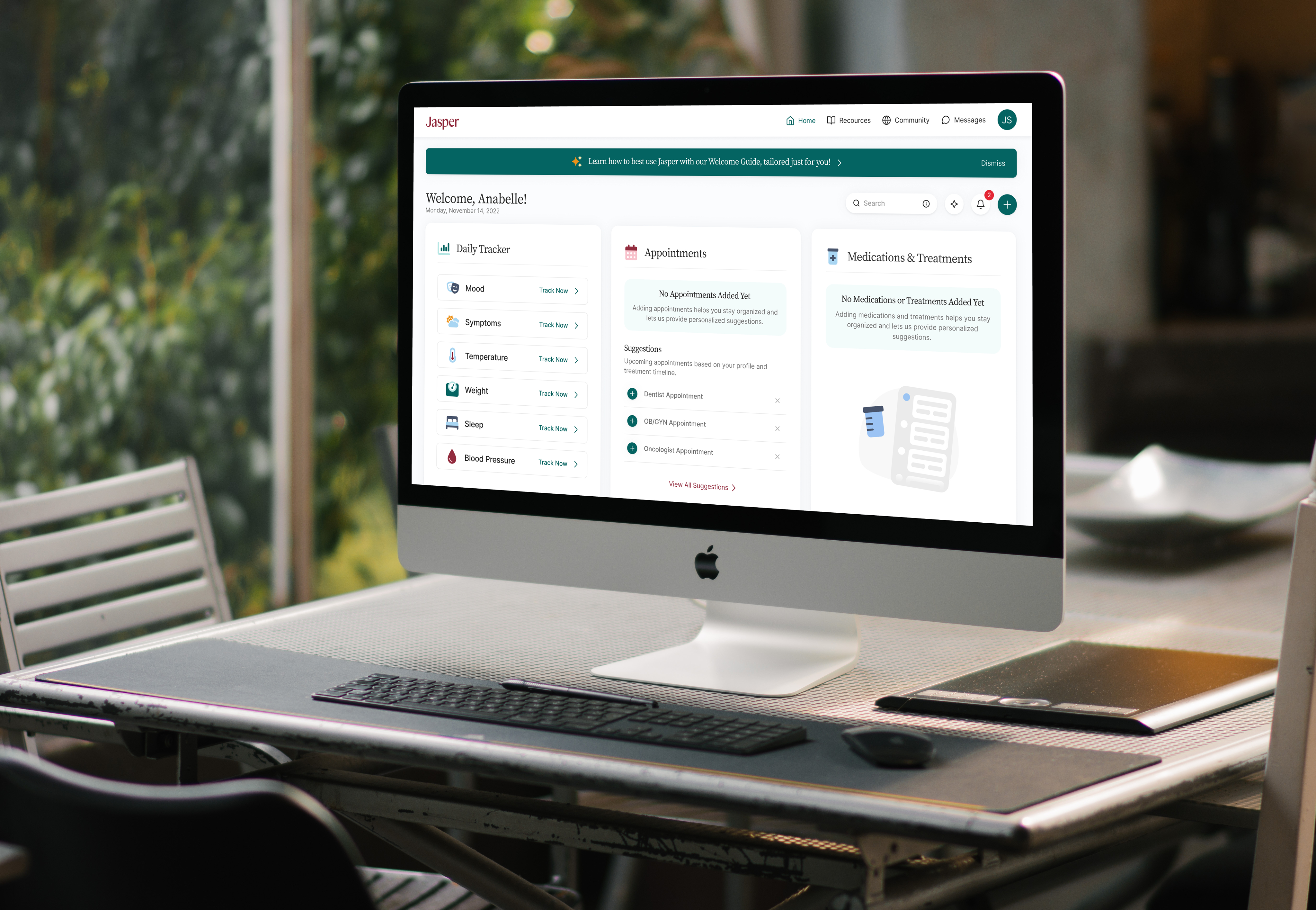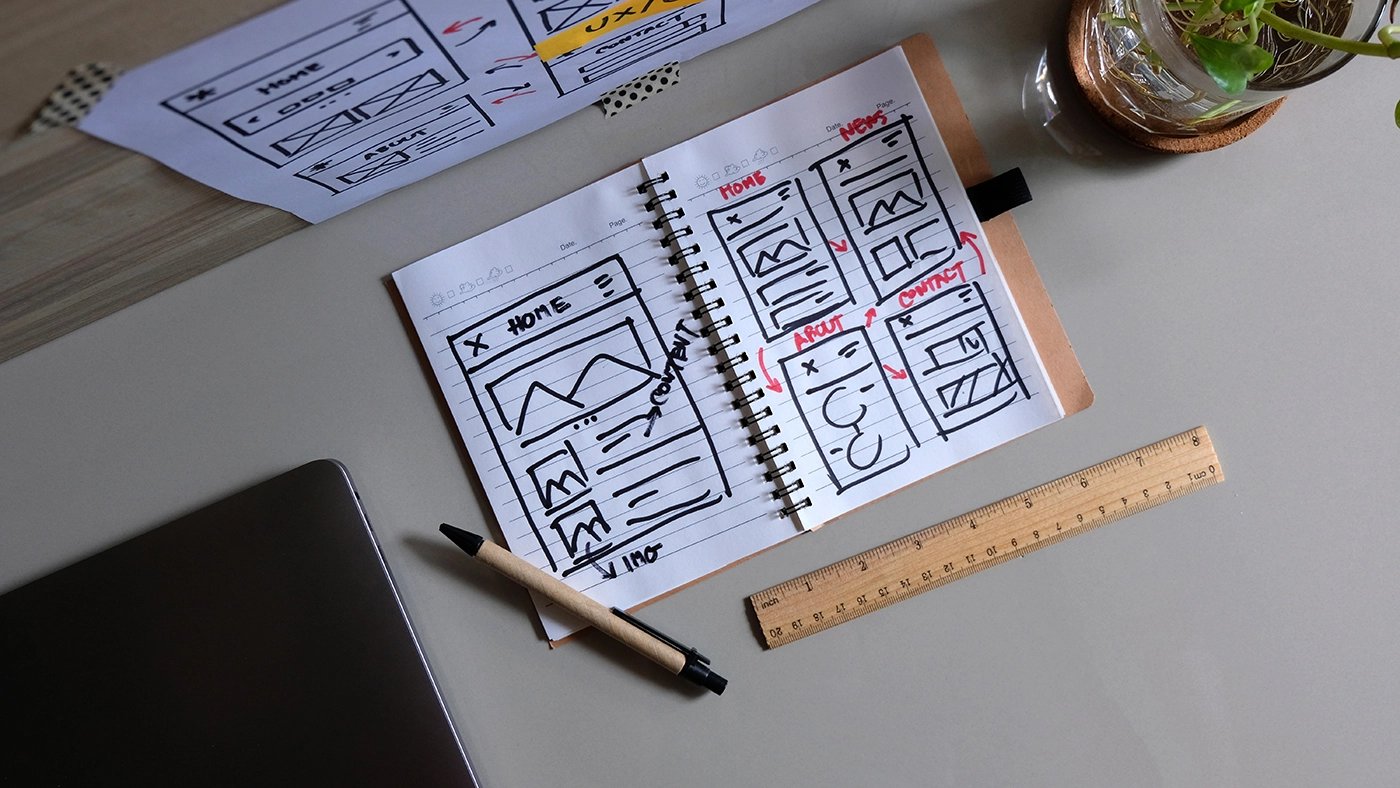
React Native vs. Flutter vs. Maui: A Comprehensive Comparison
Written by Marc Alringer
Overview
Each framework offers unique strengths and capabilities catering to various cross-platform development needs.
Comparing React Native vs. Flutter vs. MAUI
| React Native | Flutter | MAUI | |
| Programming Language | JavaScript | Dart | .NET - C# and F# |
| Platform Support | Mobile focused | iOS / Android, Web, Windows, MacOS, Linux |
iOS / Android / Windows / MacOS
|
| Performance | Creates native code at runtime, may lead to performance differences | Compiles native code for optimized UX | .NET 6 Integration, high performance, advanced feature access |
| Components / Widgets | Native components and libraries, often requires customization | Vast library of customizable widgets | Wide range of native controls and UI elements |
| Developer Ecosystem | Large dev community, huge library of 3rd party resources | Growing community, extensive documentation, large package / plugin ecosystem |
Extensive resources /support of Microsoft
|
-
React Native, developed by Facebook and uses JavaScript, offers a large developer community and access to native modules. It's well-suited for hybrid mobile apps with a native feel, social networking, and media streaming apps.
-
Flutter, developed by Google and using Dart, is known for its rich set of customizable widgets and one codebase for multiple platforms. It excels in creating visually engaging, high-performance applications for e-commerce, health and fitness, and education.
-
MAUI, an evolution of Xamarin.Forms by Microsoft, uses .NET and is integrated with .NET 6. It offers a single project structure and hot reload for XAML and CSS, aiming for broader platform reach and simplifying native app creation for various platforms.
Time to read: 18 min
A New Power Emerges: .net maui
In the ever-evolving landscape of mobile app development, choosing the right framework is a pivotal decision that can significantly impact the success of a project. As businesses strive to reach a wider audience across diverse platforms, the demand for cross-platform development solutions has surged. In response, several powerful frameworks for developing mobile and desktop apps have emerged, each with its unique strengths and capabilities.
React Native and Flutter have long been at the forefront of cross-platform development, offering developers the ability to create mobile applications for both iOS and Android with a single codebase. These two frameworks have garnered substantial attention and have become the go-to choices for many developers.

However, the software development world is dynamic, and innovation is a constant force. That's where .NET MAUI (Multi-platform App UI), or simply Maui, comes into play. While React Native and Flutter have been in the limelight for a while, Maui, with its roots in the .NET ecosystem, is poised to challenge the status quo.
In this comprehensive comparison, we will delve into the world of cross-platform mobile app development and explore the key features, strengths, and use cases of React Native, Flutter, and the newcomer, Maui.
Whether you're a developer seeking the best tool for your next project or a business decision-maker evaluating the right technology stack for your applications, this guide will equip you with the insights you need to make an informed choice. Join us as we navigate through the realms of React Native, Flutter, and Maui to help you decide which one aligns best with your development goals and aspirations.
WHO ARE WE? EXPERT MOBILE APP DEVELOPERS
-
At Seamgen, we have over a decade of experience working with client requests and requirements to determine the best framework for their specific needs. Learn more about our Custom Mobile App Development Services.
-
USA Design Led Development Agency based in San Diego, CA.
-
We invite you to call us for a free project consultation.
Overview of MAUI
While React Native and Flutter have long dominated cross-platform mobile development, a new contender, MAUI (Multi-platform App UI), has emerged from Microsoft, generating excitement. MAUI, an evolution of Xamarin.Forms, simplifies native app creation for iOS, Android, macOS, and Windows from one codebase. Rooted in the .NET ecosystem, MAUI offers an enticing alternative for developers and businesses aiming to leverage .NET skills for broader platform reach. This section explores MAUI's features, comparing it to React Native and Flutter, helping you decide if MAUI suits your cross-platform development needs.
What about my Xamarin.Forms skills and applications?
If you've been using Xamarin.Forms for cross-platform mobile app development, you might be wondering about the fate of your existing skills and applications with the introduction of MAUI. Xamarin.Forms has been a reliable choice for many developers, allowing them to create mobile apps that run seamlessly on both iOS and Android devices. However, Microsoft has made it clear that MAUI is the future, and Xamarin.Forms projects need to be migrated to MAUI by May 1st, 2024.
So, what does this mean for developers who have invested time and effort into mastering Xamarin.Forms and have applications built with it? The good news is that your Xamarin.Forms skills are not in vain. The .NET multi platform app UI is designed as an evolution of Xamarin.Forms, which means that many of the skills and concepts you've acquired to develop apps will still be highly valuable in the transition.
Seamgen Pro Tip: We emphasize the importance of platform reach. MAUI's extended compatibility, including macOS, Windows, Android, and iOS, opens doors to a broader audience, making it an excellent choice for a wide range of applications.
What is different about MAUI?
Maui introduces several key differences that set it apart in the world of cross-platform development. Let's explore what makes Maui unique and why it's garnering attention among developers and businesses.
1. Enhanced Platform Reach: One of the standout features of Maui is its expanded platform reach. While Xamarin.Forms primarily targeted iOS and Android, Maui goes further by offering support for macOS, Windows, Android, iOS, and more. This broader compatibility allows developers to reach a wider audience, making it an excellent choice for native apps as well as multi-platform applications.
2. Single Project Structure: Maui simplifies project management with a single project structure. This means that you can house your application's code, resources, and UI elements within a single project, streamlining the development process. Gone are the days of managing separate platform-specific projects; Maui unifies everything, reducing complexity and saving time.

3. Hot Reload for XAML and CSS: Maui introduces Hot Reload for XAML and CSS, a feature that allows developers to see real-time changes in the app's user interface as they code. This significantly speeds up the development process, making it easier to fine-tune the UI for a perfect user experience.
4. .NET 6 Integration: Maui is built on .NET 6, the latest version of the .NET framework. This integration ensures access to cutting-edge features, improved performance, and the latest security updates. It also means that you can utilize the vast ecosystem of .NET libraries and tools to enhance your Maui applications.
MAUI Example Use Cases
Maui's versatility and expanded platform support make it a compelling choice for a wide range of use cases. Let's explore some example scenarios where Maui can shine:
Cross-Platform Mobile Apps: This is the most obvious and foundational use case for Maui. Developers can create cross-platform mobile applications for iOS, Android, macOS, Windows, and more, all from a single codebase. Whether you're building a productivity app, a social networking platform, or an e-commerce solution, Maui's cross-platform capabilities ensure consistent user experiences across different devices.
Enterprise Solutions: Maui is well-suited for building enterprise-level applications. Businesses can use Maui to develop applications that streamline their internal processes, enhance communication, and improve productivity. For instance, creating custom CRM (Customer Relationship Management) systems, project management tools, or data analytics dashboards that work seamlessly on various platforms is made easier with Maui.
Financial and Banking Apps: Security and reliability are critical in financial and banking applications. Maui's ability to provide consistent native experiences on iOS, Android, and other platforms makes it a suitable choice for developing mobile banking apps, investment management tools, and payment solutions.
These are just a few examples, and Maui's flexibility allows for the creation of diverse applications that cater to different industries and user needs. Whether you're a developer or a business looking to provide cross-platform solutions, Maui's wide array of use cases makes it a versatile and attractive option.
What MAUI Provides
Maui, or .NET Multi-platform App UI, offers a robust set of features and tools designed to simplify cross-platform mobile application development. Whether you're a developer or a business seeking a versatile solution, here's a glimpse of what Maui provides:
Native User Interfaces: Maui prioritizes delivering native user interfaces for all supported platforms. This ensures that your app feels and performs natively on each device, resulting in a high-quality user experience.
Community and Ecosystem: Maui benefits from the existing .NET developer community and ecosystem. This means access to a wealth of resources, third-party libraries, and community support, making it easier to solve problems and extend your application's capabilities.
Enhanced Performance: Maui is engineered for improved performance, ensuring that your applications run smoothly and efficiently on all supported platforms. This is particularly important for applications with demanding requirements, such as games or real-time data processing.

In summary, Maui provides a comprehensive development framework that simplifies cross-platform mobile app development, facilitates the creation of native user experiences, and integrates seamlessly with the .NET ecosystem. Whether you're an experienced developer looking to streamline your workflow or a business aiming to expand its reach, Maui offers a rich set of tools to meet your needs.
Getting Started with MAUI
If you're excited about the potential of MAUI and are eager to begin your journey with this powerful framework, you'll be pleased to know that getting started is a straightforward process. Whether you're a seasoned developer or new to cross-platform development, here's how you can embark on your Maui adventure:
Install the Prerequisites: Before you start working with Maui, you'll need to set up your development environment. Ensure you have Visual Studio installed, as MAUI development is typically done in Visual Studio. You'll also need to install the .NET 6 SDK, and convert your projects from .NET Framework.
Create a New Project: In Visual Studio, you can create a new MAUI project from a template. Maui offers project templates for a variety of app types. Select the template that best matches your project requirements.
Explore the Code: Once you've created a project, you'll be greeted with a unified project structure, making it easier to manage your code, resources, and UI elements. Dive into the codebase, explore the project structure, and familiarize yourself with the structure of a Maui application.

Design Your User Interface: Maui simplifies UI development with XAML, a markup language for creating user interfaces. You can use XAML to design your app's screens and layout. Maui also provides a Hot Reload feature for XAML and CSS, allowing you to see real-time changes as you code, which is incredibly helpful for designing a pixel-perfect user interface.
Test on Different Platforms: One of the benefits of MAUI is the ability to test your application on multiple platforms without leaving your development environment. Use the built-in emulators or simulators to preview how your app looks and functions on iOS, Android, macOS, and Windows, or any target platform.
Community Resources: As you dive into MAUI development, remember that you're not alone. The .NET developer community is active, supportive, and full of experienced .NET developers. There, you'll find a wealth of resources, tutorials, and forums to help you overcome challenges and make the most of your Maui projects.
By following these steps and immersing yourself in the Maui ecosystem, you'll be well on your way to building cross-platform applications with native-like experiences. Whether you're creating a new project or migrating an existing Xamarin.Forms app, Maui offers a promising future for cross-platform development, and your journey begins with getting started.
How Developers Use Maui/Xamarin
Developers leverage Xamarin to streamline cross-platform mobile app development, harnessing its ability to share up to 75 percent of code across iOS, Android, and Windows platforms. Xamarin.Forms, equipped with over 40 cross-platform controls, allow for code sharing to reach even 100 percent, ensuring consistency in the user interface. Companies like Olo, MRW, and CA Mobile have reaped the benefits of Xamarin's code reusability, enhancing their development efficiency.
For instance, Olo, a leader in digital hospitality, transitioned to Xamarin to unify their codebase across brands, while MRW, Spain's international transport company, avoided a costly rewrite by reusing their Windows app code for Android using Xamarin. Similarly, CA Mobile, a major Portuguese bank, achieved a swift release for all platforms, covering 34 expense categories, with 75 percent code reuse.
Xamarin's familiarity with C# and .NET provides developers with a comfortable environment, enabling them to expedite mobile app creation. The World Bank utilized Xamarin for its survey application, tapping into their C# expertise to implement survey tools on various platforms. Startups like Storyo and Captio capitalized on Xamarin's ease of use, allowing them to bring their apps to market quickly, with Captio even reaping the benefits of 80 percent code reuse.
Xamarin's native functionality, facilitated by native API access and platform-specific hardware utilization, ensures that apps built with it meet user expectations for fluidity and platform integration. Companies like Fareboom, Picturex, Vanderlande, Insightly CRM, and Alaska Airlines have successfully developed cross-platform apps with Xamarin, covering diverse functionalities from travel booking to expense management.
In conclusion, Xamarin finds its niche in scenarios where code reuse, familiarity with C# and .NET, and native functionality are paramount, making it a preferred choice for various industries and app types.

Marc Alringer
President/Founder, Seamgen
Marc Alringer, the visionary President and Founder of Seamgen, has been at the forefront of digital transformations, specializing in web and mobile app design and development. A proud alumnus of the University of Southern California (USC) with a background in Biomedical and Electrical Engineering, Marc has been instrumental in establishing Seamgen as San Diego's top custom application development company. With a rich history of partnering with Fortune 500 companies, startups, and fast-growth midsize firms, Marc's leadership has seen Seamgen receive accolades such as the Inc 5000 and San Diego Business Journal’s “Fastest Growing Private Companies”. His expertise spans a wide range of technologies, from cloud architecture with partners like Microsoft and Amazon AWS, to mobile app development across platforms like iOS and Android. Marc's dedication to excellence is evident in Seamgen's impressive clientele, which includes giants like Kia, Viasat, Coca Cola, and Oracle.
Overview of Flutter
In the world of cross-platform mobile app development, Flutter has made a significant impact. Developed by Google, this versatile framework allows the creation of native-quality applications for mobile, web, and desktop, all from a single codebase. Powered by the Dart programming language and a rich library of pre-designed widgets, Flutter focuses on delivering exceptional performance and polished, responsive user interfaces. With support from Google and the developer community, Flutter is a compelling choice for projects of all complexities. This section delves into Flutter's features, strengths, and use cases, offering insights for developers and business decision-makers exploring its potential in the cross-platform development landscape.
Flutter Example Use Cases
Flutter's versatility and rich set of features make it a versatile choice for various application scenarios. Here are some example use cases where Flutter can shine:
E-Commerce Apps: Flutter is a popular choice for developing e-commerce apps, allowing businesses to provide a seamless and visually engaging shopping experience. Applications like Alibaba and eBay have utilized Flutter to create user-friendly and high-performance e-commerce platforms.

Health and Fitness Apps: Flutter can be used to create applications for health and fitness enthusiasts, offering features like workout tracking, diet management, and health monitoring. These apps can run smoothly on both iOS and Android devices.
Educational Apps: Educational institutions and e-learning platforms can utilize Flutter to create interactive and engaging educational apps. These apps can offer features such as quizzes, video lessons, and progress tracking, all while maintaining a consistent experience across platforms.
These are just a few examples of how Flutter can be applied across different industries and user scenarios. Flutter's strengths in visual design, performance, and cross-platform compatibility make it a valuable tool for developers and businesses looking to create high-quality, versatile applications.
What Flutter Provides
Flutter is renowned for its rich set of features and capabilities that empower developers to create stunning, high-performance applications. Here's an overview of what Flutter provides:
One Codebase for Several Platforms: Flutter allows developers to write one codebase that can be deployed on iOS, Android, web, and even desktop platforms. This enables significant time and cost savings by eliminating the need for platform specific code.
Rich Set of Widgets: Flutter offers an extensive library of customizable widgets for building cross-platform graphics functionality. These widgets are visually appealing and can be easily tailored to create complex and responsive UIs, resulting in consistent and visually engaging designs.

Dart Language: Flutter uses the Dart programming language, known for its fast execution and strong performance. Dart's simplicity and familiarity with developers make it a solid choice for building Flutter apps.
These features make Flutter a compelling choice for developers and businesses seeking to build high-quality, visually appealing, and cross-platform apps efficiently and effectively. Whether you're building a new mobile app or expanding your project to web and desktop platforms, Flutter provides the tools and capabilities you need to succeed.
Getting Started with Flutter
Starting your journey with Flutter is a straightforward process, and whether you're a seasoned developer or new to cross-platform app development, these steps will help you kickstart your project:
Install Flutter: To begin, you'll need to install the Flutter SDK on your development machine. Flutter provides detailed installation guides for Windows, macOS, and Linux, ensuring compatibility with your preferred operating system.
Set up an IDE: Flutter can be developed using a variety of integrated development environments (IDEs), but two of the most popular choices are Android Studio and Visual Studio Code (VS Code). Install your preferred IDE and add the Flutter and Dart extensions to streamline your development workflow.
Check Dependencies: Flutter relies on various dependencies and libraries. Before starting your project, it's essential to ensure that all dependencies are correctly installed and configured. Flutter's documentation provides clear instructions for this step.
Create Your First Project: Once your development environment is set up, you can create a new Flutter project using the "flutter create" command. This will set up a basic project structure and configuration for your app.
Explore the Code: Dive into your project's codebase and start customizing your app. Flutter employs a component-based architecture where you can build your app's UI using widgets. Explore the "lib" folder, which contains the main Dart code for your app, and the "pubspec.yaml" file, where you can define your app's dependencies.

Design the UI: Flutter's rich library of widgets allows you to design your app's user interface with ease. You can start by using pre-designed widgets for common elements like buttons, text fields, and lists, and then customize them to fit your app's design.
Test on Emulators and Real Devices: Flutter provides built-in emulators for both iOS and Android, allowing you to test your app on different virtual devices. You can also test your app on physical devices, ensuring a real-world experience.
Community and Resources: As you embark on your Flutter journey, remember that you're part of a vibrant developer community. Seek out online resources, forums, and tutorials to help you learn, troubleshoot, and master Flutter's capabilities.
Publish Your App: Once your app is ready, you can publish it to the Google Play Store and Apple App Store for Android and iOS, respectively. Follow the respective app store guidelines to ensure your app meets their requirements.
With these steps, you'll be well on your way to creating your first Flutter application. Flutter's simplicity and the wealth of resources available make it an excellent choice for developing visually appealing and high-performance cross-platform apps. Whether you're building a new project or migrating an existing one, Flutter provides the tools and flexibility you need to succeed.
How Developers Use Flutter
Flutter's appeal lies in its developer-friendly nature, supported by extensive documentation. With the ability to preview changes, deliver high-performance applications, and work with less resource-intensive designs, Flutter has gained traction since its public release in version 0.6. Its open-source nature, coupled with continuous enhancements, has contributed to its popularity among developers. Flutter's significance extends beyond individual app development, as it serves as the primary platform for Fuchsia, a forthcoming Google operating system poised to replace Android.
The versatility of Flutter is evident in its adoption by prominent applications like Google Ads, Xianyu by Alibaba, and Hamilton, showcasing the framework's ability to accelerate app growth and simplify the mobile application development process. Developers appreciate Flutter's efficiency, ease of use, and the native support it provides, making it a preferred choice for a diverse range of applications, from social media platforms like KlasterMe to productivity apps like Reflectly and business-oriented platforms such as Xianyu by Alibaba.
The framework's adaptability is evident in its utilization by various industries, ranging from social and entertainment apps like Pairing and Postmuse to utility-focused applications like Watermaniac and Cryptograph. Intelivita, a prominent Flutter app development company, exemplifies the framework's capabilities by creating diverse applications, including sports planning app Take Your Seat, educational app Meritec Digital Learning, and marketplace apps like BeerCert, LTB Operations, and Pay N Park.
The success stories of these apps highlight Flutter's effectiveness in providing consistent frameworks, enabling fast and seamless development processes on both platforms and delivering smooth animations with rich UI. While developers face challenges due to the relative youth of Flutter, the growing community fosters optimism for addressing emerging issues and advancing the framework's capabilities.
Overall, Flutter empowers developers to create visually appealing, high-performance, and cross-platform applications, making it a valuable asset in the ever-evolving landscape of mobile app development.
Seamgen Case Study
Flutter Project Spotlight: Jasper Cancer Care Companion - Accessibility Enhancements
Seamgen also partnered with Jasper, a pioneer in cancer care support, to bolster the accessibility features of their Cancer Care Companion app. Our focus was on refining the app's functionality to be more user-friendly and accessible, particularly for individuals navigating the complexities of cancer treatment.

The Jasper Cancer Care Companion app serves as a lifeline for individuals managing their cancer care journey. Our team, with a keen eye on accessibility, implemented a suite of enhancements including improved screen reader compatibility, refined color contrast for better visibility, and streamlined navigation layouts to accommodate diverse user abilities.
These enhancements had a profound impact, making the app significantly more inclusive. By extending usability to a broader spectrum of users with diverse accessibility needs, we aligned the app more closely with its mission of offering comprehensive support and guidance to cancer patients and their caregivers.
Our collaboration with Jasper epitomizes Seamgen’s commitment to crafting solutions that transcend technological barriers, fostering inclusivity and ease-of-use for all users.
Overview of React Native
React Native is a dynamic and widely adopted open-source framework for building cross-platform mobile applications. Developed by Facebook, it leverages the power of the React JavaScript library to enable developers to create natively rendered applications for both iOS and Android using a single codebase. Its ability to deliver high-performance, visually engaging apps, while allowing for a shared codebase, has made React Native a popular choice for developers and businesses alike. In this section, we will delve into React Native's unique features, strengths, and use cases, providing insight into its role in the realm of cross-platform mobile app development.
React Native Example Use Cases
React Native's versatility extends to a wide range of use cases, making it a go-to framework for developers and businesses seeking to build cross-platform mobile applications. From creating visually engaging social networking apps to streamlining e-commerce experiences, it offers unique strengths that cater to diverse industries and user needs. In this section, we will explore several distinct use cases where React Native's capabilities shine.
Hybrid Mobile Apps with Native Feel: React Native is well-suited for creating hybrid mobile apps that offer a native-like user experience. It allows developers to blend native components and JavaScript to create applications with the look and feel of a truly native app. This makes it an ideal choice for businesses looking to provide a consistent user experience across different platforms while reusing a significant portion of their code.

Social Networking Apps: React Native is an excellent choice for building social networking applications. It offers access to a wide range of libraries and plugins, making it easier to integrate features like social sharing, real-time chat, user authentication, and push notifications. Applications like Facebook, Instagram, and Pinterest have utilized the framework to provide a seamless social experience on mobile.
Media Streaming and Entertainment Apps: For businesses in the media and entertainment industry, React Native can be an asset. Whether you're developing a music streaming app, a video-on-demand platform, or an e-book reader, React Native's performance and user interface capabilities help create engaging and visually appealing experiences for users.
These use cases highlight React Native's flexibility and the broad range of applications it can support. Whether you're a startup, a well-established business, or an individual developer, React Native provides the tools to create feature-rich and engaging mobile apps efficiently.
What React Native Provides
React Native is renowned for offering a wide array of features that simplify cross-platform mobile application development, ensuring a high-quality user experience. Here are some key aspects of what the framework provides:
JavaScript Ecosystem: Developers can leverage the extensive JavaScript ecosystem, including libraries and packages, to extend the functionality of their applications. This provides access to a wealth of pre-built solutions to address various development needs.
Native Modules: React Native enables the use of native modules and libraries when necessary. This flexibility allows developers to incorporate platform-specific functionality or access native APIs seamlessly.
Access to Native APIs: React Native allows developers to access device-specific APIs and native functionality directly from JavaScript. This means that device features like the camera, geolocation, and sensors are accessible for app development.
These features collectively make React Native a versatile choice for creating cross-platform mobile applications that offer native-like performance and a visually engaging UI. Whether you're building a new project or transitioning an existing one to cross-platform development, the framework provides the tools and capabilities to achieve your mobile app goals efficiently and effectively.
Getting Started with React Native
Beginning your journey with React Native is a straightforward process, and it's accessible to developers of varying levels of experience. Whether you're an experienced mobile app developer or new to cross-platform development, these steps will help you get started with React Native:
Prerequisites: Before diving into React Native, ensure you have the necessary prerequisites in place. This includes having Node.js and npm (Node Package Manager) installed on your development machine. You'll also need a code editor, such as Visual Studio Code or Atom.
Installing React Native CLI: React Native provides a command-line interface (CLI) that simplifies project setup and development. You can install the React Native CLI globally on your machine using npm by running the command: npm install -g react-native-cli.
Creating a New Project: With the CLI installed, you can create a new React Native project using the following command: react-native init YourProjectName. This will set up a basic project structure with necessary dependencies.

Choosing a Development Environment: React Native supports both Android and iOS development. To develop for iOS, you'll need a macOS machine, and for Android, you can use Windows, macOS, or Linux. Ensure you have the required development environments set up, such as Android Studio for Android development and Xcode for iOS development on macOS.
Running Your App: You can launch your React Native app by navigating to the project directory and running react-native run-ios for iOS or react-native run-android for Android. This will start the development server and launch your app in the respective simulator or emulator.
Code and Components: Begin exploring your project's codebase, located in the src directory, where you can find the primary JavaScript files. React Native follows a component-based architecture, so start building your app's user interface using React components. You can also add third-party libraries and packages using npm.
Testing on Real Devices: While emulators and simulators are valuable for testing, it's essential to test your app on real devices to ensure a real-world user experience. You can connect your device to your development machine and run the app directly on the device.
Community and Resources: As you embark on your React Native journey, remember that you're part of an active and supportive developer community. Seek out online tutorials, forums, and documentation to gain insights, troubleshoot issues, and accelerate your learning.
Deployment: Once your app is ready, you can prepare it for deployment on the Google Play Store for Android and the Apple App Store for iOS. Follow the respective app store guidelines for submitting your app.
With these steps, you'll be well on your way to developing mobile applications using React Native. The framework's flexibility and the wealth of resources available make it an excellent choice for building cross-platform apps that offer high-quality user experiences. Whether you're creating a new project or transitioning an existing one, React Native equips you with the tools and capabilities needed for success.
How Developers Use React Native
Developers leverage React Native to create versatile and high-performance mobile applications across various industries. At Seamgen, we've witnessed clients benefiting from the platform's features since its release in 2015. The ability to build apps for multiple platforms simultaneously has made React Native a preferred choice for developers, startups, and business owners.
Some prominent examples include UberEats, where React Native was utilized to rebuild the dashboard, enhancing user experience by enabling native functionalities like sound notifications. Walmart aimed for online retail supremacy and achieved it by adopting React Native, boosting app performance and sharing 95% of the codebase between Android and iOS. Shopify experimented with React Native and found their dev team to be twice as productive as native development, especially when rewriting the Arrive app.
Veygo by Admiral Group, a temporary car insurance company, quickly evaluated its business idea by building an MVP in just six weeks using React Native. Facebook, the originator of React Native, utilized it to enhance the startup time of the Events Dashboard in their iOS app, achieving twice the speed. Instagram integrated React Native into its existing app, allowing faster feature delivery for both Android and iOS.
Pinterest embraced React Native to increase developer velocity, reducing time spent on standups and meetings. Other notable examples include Coinbase Pro, Discord, Bloomberg, and many more, showcasing React Native's versatility across diverse applications like health tracking, language learning, and even mapping cities through gamification.
In essence, React Native empowers developers to create cross-platform apps efficiently, contributing to improved productivity, reduced development time, and enhanced user experiences.
Seamgen Case Study
React Native Project Spotlight: ENVOY Inventory Management App Migration
Seamgen recently collaborated with ENVOY SOLUTIONS, aiming to elevate their inventory management capabilities by migrating their existing Xamarin-based app to React Native. Our shared objective was clear: to enhance app performance and user experience while preserving all the functionalities vital to ENVOY’s operations.
.png?width=4096&height=2732&name=Envoy%20(1).png)
Through meticulous analysis and strategic planning, we embarked on the development journey, crafting a bespoke React Native app tailored for ENVOY’s esteemed customers. This next-gen app boasted features like real-time inventory visibility, multi-user access with synchronized schedules, and seamless QR code/barcode scanning for precise product identification.
Our migration process was comprehensive, involving in-depth scrutiny of the previous Xamarin app's functionality and user requirements. The development phase prioritized performance optimization and user-centric enhancements. Rigorous testing ensured the new app mirrored all critical functionalities, guaranteeing a seamless transition without disruption to ENVOY’s valued customers.
The outcome was remarkable: a marked improvement in app performance and user experience. React Native's architecture offered an efficient pathway for maintenance and future updates, thereby augmenting operational productivity in ENVOY’s inventory management processes.
Choosing the Right Framework

When it comes to choosing the right framework for cross-platform mobile app development, you'll likely encounter a variety of options, with Flutter, MAUI, and React Native being some of the best. These frameworks share a common goal: simplifying the process of building apps for multiple platforms, including macOS and Windows, as well as mobile devices. However, they do so in different ways. Let's compare the three to help you make an informed decision:
Seamgen Pro Tip: At Seamgen, we know that choosing the right cross-platform framework is a crucial decision. With our extensive experience in mobile app development, we recommend carefully considering your project's specific requirements to make an informed choice between React Native, Flutter, and MAUI.
Comparison of React Native vs. Flutter vs. MAUI
| React Native | Flutter | MAUI | |
| Programming Language | Relies on JavaScript, a language with a vast developer community and a wealth of third-party libraries. | Uses the Dart programming language, which is known for its fast performance and rich tooling. | Built on the .NET ecosystem, allowing developers to use C# and F# for development. |
| Platform Support | Primarily designed for mobile app development, with efforts to expand to other platforms. | Supports mobile (iOS and Android), web, and desktop (Windows, macOS, and Linux). |
Offers cross-platform development for mobile (iOS and Android) as well as Windows and macOS.
|
| Performance | Translates components into native code during runtime, which may lead to performance differences compared to fully compiled solutions. | Compiles to native code, resulting in exceptional performance and smooth animations. | Benefits from .NET 6 integration, ensuring high performance and access to advanced features. |
| Components / Widgets | Relies on a combination of native components and libraries to create UI elements, often requiring additional customization. | Offers a vast library of customizable widgets that enable the creation of rich and engaging user interfaces. | Provides a wide range of native controls and UI elements for consistent, platform-specific designs. |
| Developer Ecosystem | Has a large and active developer community, resulting in a vast library of third-party packages and resources. | Backed by Google, Flutter has a strong and growing community and offers extensive documentation and a rich ecosystem of packages and plugins. |
Leveraging the .NET ecosystem, MAUI benefits from the extensive resources and support of the Microsoft community.
|
These frameworks each have their strengths and are suited to different scenarios. The choice between them depends on factors such as your team's expertise, project requirements, and the platforms you intend to target.






